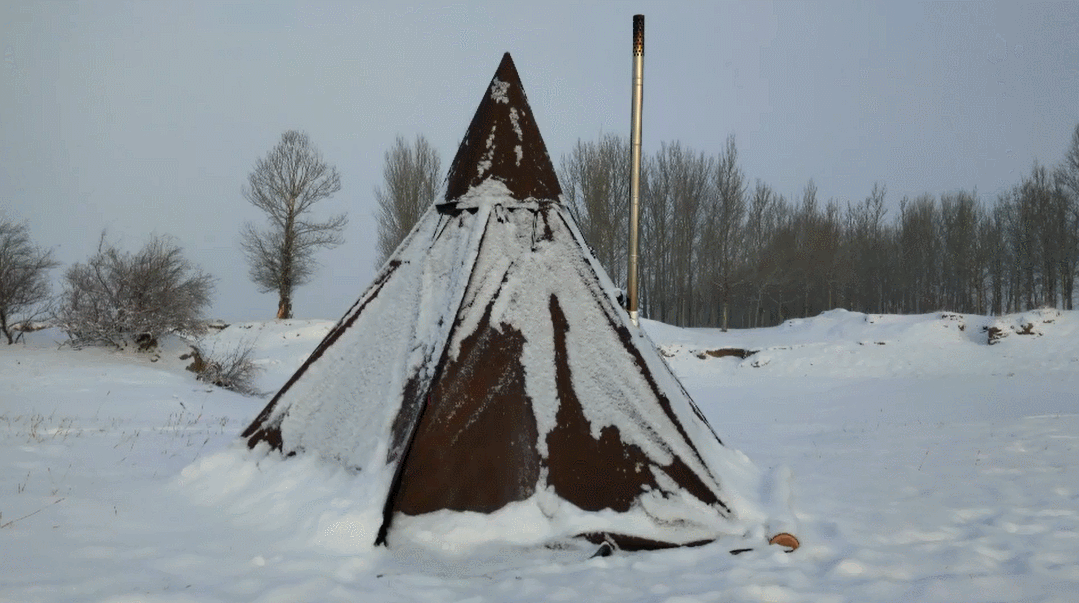Winter Hiking and Camping 2024 | Notes
Feb 4, 2024
Introduction:
Winter hiking and camping offer stunning landscapes and a unique outdoor experience. However, venturing into winter conditions requires careful planning and the right gear to ensure your safety and enjoyment. In this comprehensive guide, we will provide valuable notes for winter hiking and camping in 2024. From choosing the right equipment to essential safety precautions, this article will help you make the most of your winter adventures.
Section 1: Selecting a Suitable Winter Tent
1. Cold Weather Ratings:
When selecting a tent for winter camping, consider its cold weather rating. Look for tents specifically designed for four-season or winter camping, as they are engineered to withstand low temperatures and harsh weather conditions. These tents typically feature sturdy fabrics, robust poles, and enhanced stability to withstand strong winds and snow accumulation.
2. Tent Design and Features:
Opt for tents with a dome or geodesic design, as they offer better stability against winter elements. Look for features like steep sidewalls to prevent snow buildup and ample headroom to move around comfortably. Double-walled construction, reinforced seams, and a full-coverage rainfly are essential for insulation and protection from the cold.
3. Size and Space:
Consider the size of the tent based on the number of occupants and gear you need to accommodate. Look for tents with vestibules or extra storage areas to keep your equipment dry and organized. Ensure there is enough space inside the tent to move around comfortably, especially if you anticipate spending extended periods due to adverse weather conditions.

Section 2: Essential Winter Hiking Gear
1. Layering Clothing:
Dress in layers to regulate your body temperature. Start with a moisture-wicking base layer, add insulating mid-layers, and top it off with a waterproof and windproof outer layer. Don't forget to protect your extremities with warm socks, gloves, a hat, and a neck gaiter or balaclava.
2. Quality Insulated Boots:
Invest in high-quality insulated boots designed for winter hiking. Look for boots with waterproof and breathable membranes to keep your feet dry and comfortable. Ensure they have proper insulation to withstand cold temperatures and provide adequate traction for slippery surfaces.
3. Trekking Poles:
Trekking poles provide stability and support while hiking on snow-covered terrain. They help distribute your weight and reduce strain on your joints. Look for adjustable poles with sturdy grips and snow baskets for better performance in winter conditions.
Section 3: Essential Safety Precautions
1. Trip Planning and Research:
Thoroughly research your hiking trail or camping area before embarking on your winter adventure. Check weather forecasts, trail conditions, and avalanche risks. Plan your route accordingly and inform someone of your itinerary and expected return time.
2. Navigation Tools:
Carry a reliable map and compass, and ensure you know how to use them. Consider using a GPS device or smartphone app with offline maps as a backup. Familiarize yourself with the route and landmarks to avoid getting lost in winter conditions.
3. Avalanche Safety:
If hiking in avalanche-prone areas, educate yourself about avalanche safety. Learn how to recognize avalanche terrain, carry essential safety gear such as a beacon, shovel, and probe, and consider taking an avalanche safety course to enhance your knowledge and skills.
Section 4: Food, Water, and Hydration
1. Caloric Intake:
Winter hiking and camping require more energy to stay warm. Pack high-calorie, nutrient-dense foods to fuel your body. Include snacks that don't freeze easily, such as nuts, energy bars, and dried fruits.
2. Hydration:
Stay hydrated by drinking plenty of water, even in cold weather. Dehydration can occur quickly, so carry an insulated water bottle or thermos to prevent freezing. Consider packing warm fluids like herbal tea or hot chocolate to boost morale and hydration.
Conclusion:
Winter hiking and camping in 2024 can be an exhilarating experience with the right gear and precautions. Choose a winter tent that provides insulation and protection from the elements. Invest in proper clothing, boots, and equipment to ensure your safety and comfort on the trail. Prioritize research, planning, and essential safety measures to mitigate risks associated with winter conditions. By following these notes, you'll be well-prepared for a memorable and enjoyable winter adventure.
- More FireHiking Hot Tent Camping Gear
- Company Infomation
- About us
- FireHiking Story
- Contact Us
- Notice
- Blog
- Company Policies
- Payment Policy
- Return&Refund Policy
- Shipping Policy
- Privacy Policy
- Intellectual Property Rights
- Become Affiliate
- Terms Of Use
- Terms of Use
- User Center
- Forget Password
- My Orders
- Tracking Order
- My Account
- Register
